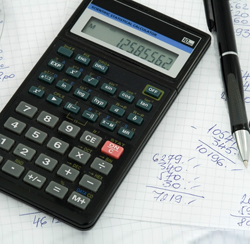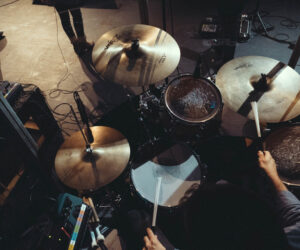This is a practical guide to doing dB (decibel) calculations, covering most common audio situations.
You see dB numbers all the time in audio. You may understand that 3 dB is considered a just noticeable change in volume level. But, you haven’t a clue how to figure out how to figure out what 24 dB from your mixing console means to your amplifier rated for 1.4V input sensitivity. You may be aware that dB calculations involve “logs” (logarithms).
Thanks to modern technology, you can do dB calculations without knowing a thing about the mathematics of logs, anti-logs, ratios, exponents, or even much about math. Unfortunately, there is no real substitute for doing these calculations, but there is a substitute for having to figure out how to do the calculations. This article figures most of that out for you.
Along the way the math is explained to some extent so that you might understand what you are doing. Some of the whys about audio calculations are also explained.
This article is necessarily long in order to cover many situations where you might need to use dB. But, if you understand the calculations, you will find that most of them repeat the same things in different ways. If you begin to see this, it means you are beginning to understand how to calculate dB.
Introduction
First, if you don’t have one, you need to acquirte a cheap scientific calculator. It must have several specific functions on it. One is a “Log” function. There are two common Log functions. One is “Log base e” or “natural Log” which you DON’T want. The other is “Log base 10” which is what you need. You can check if it is “Log base 10” by simply entering 10 and hitting the “Log” key. The display should read 1. If it doesn’t, don’t buy it.
Another function you need is a 10x function (also called 10 to the x function or the anti-log function). You can check if this is the proper function by entering 2 then hitting the 10x key. The display should read 100. You also need a +/- (change sign) key. It must also have plus, minus, divide, multiply, and equal (=) keys. You can basically ignore the other functions on it to do dB calculations.
Once armed with this tool, you can now learn to do dB calculations. Actually, you don’t really have to learn much except to push the right buttons on the calculator. In each example, you will be told exactly what calculator key to hit and what your answer should be.
Once you get the right answers as shown, you can substitute your own numbers in the various examples to figure out your own things. Remember, a calculator is a dumb device. It will only do what you tell it to do. So you must use your brain a bit to see if your answers make sense.
This means if you come up with a number like 23841 dB or 20,000,000 watts, it is wrong. Nothing in audio has 23841 dB of anything and 20,000,000 watts is out of the question, unless you’re providing sound reinforcement for Space Shuttle launches.
All of the answers given in this article only show the first two digits (numbers) to the right of the decimal point. Because fractions of a dB or a watt rarely have little practical significance in audio, these two digits are shown only so you know you got the right answer. The answer on your calculator may be 15.84893192 but the answer given here is 15.84. As you will see in one of the examples, chopping off digits like this can lead to slight, but not significant, errors.
Note again the last digit to the right in the examples is not a rounded off value in the examples, but chopped off. If it was rounded off, the answer would be shown as 15.85. Most calculators can be set to display only 2 digits after the decimal point. It rounds off numbers to do this so that 15.84893192 becomes 15.85. So, if you set the calculator to do this for figuring out the examples, your last digit to the right may be 1 larger or smaller than in the examples.
For actual audio work, you should only be concerned with dB numbers to the left of the decimal point. Thus an answer of either 15.84 or 15.85 dB should be rounded off to 16 dB when stating the result.
For each example calculation, the actual formula being used for the calculation is also shown in red. The actual calculation procedure is in blue.
The most common “Log” calculations you need are: dB to voltage, voltage to dB, voltage gain to dB, dB to voltage gain, calculating SPL for distances, and converting amplifier watts to SPL changes or SPL changes to amplifier watts. Therefore, these are the only examples given. With a little brainwork, you may be able to apply the example calculations to figure out other things.





















